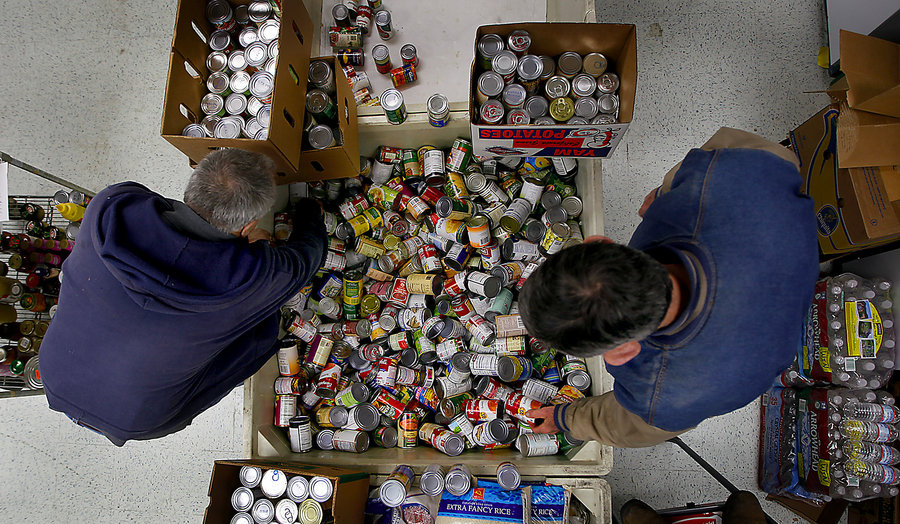"People think if it's nonperishable, it must be unhealthy," says Solari. "Instead of reaching in the back of the pantry for what's expired or undesired, we're asking people to really think about health."
That means lentils, canned tuna or canned salmon, brown rice or kidney beans. With these sorts of pantry staples, she says, "you can have amazingly healthy food as the basis of any meal."
Though many people may not realize it, eating this way – with a focus on whole, unprocessed or minimally processed foods – can also be a lot cheaper, when you look at the cost per serving, Solari notes. A cost-comparison chart on Superfood's website shows how swapping in raisins for fruit snacks or rolled oats for instant oatmeal will get you a much better (and healthier) bang for your buck.
Giving food pantry clients this type of price information is key to helping them make better nutritional choices when they're shopping, too, says Jennifer Gilmore, executive director of Feeding America San Diego, a hunger-relief organization that serves some 480,000 people in San Diego County, Calif. She says 67 percent of families who frequent food banks make their food purchases "based on dollars, instead of anything having to do with nutrition."
One in 7 Americans visited a food pantry in 2013, according to a national survey conducted by Feeding America.
"These are the elderly, single parents, they're returning veterans," notes Solari. "They're people just like us, our neighbors who hard times have forced to choose between paying for utilities and food."
Many of these people are also struggling with diet-related diseases like diabetes. So in recent years, hunger-relief groups have been putting an increasing emphasis on healthful eating, says Gilmore, who worked with Solari to revamp her organization's nutritional policies. That involved changing not only the types of foods that pantries give out to families, Gilmore says, but also educating volunteers and staffers about healthier cooking, so they can pass that knowledge on to the people they serve.
"It's one thing to distribute brown rice and quinoa and bok choy," says Gilmore. "It's a whole other thing to get families to taste it and cook it and eat it at home." Her group now hands out recipes with food boxes.
The goal, says Solari, is to make healthful eating approachable and "really debunking the idea that it's an elitist thing."
"It's not enough to fill empty stomachs," she says. "The opposite of being hungry isn't being full – it's being healthy."
Planning to donate to a food drive this holiday season? Here's SuperFood Drive's suggested shopping list. It's also just as efficient to give money to your local bank online.
Copyright 2014 NPR.
